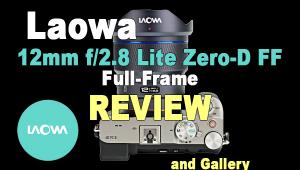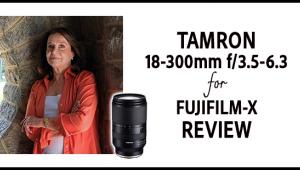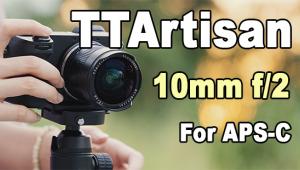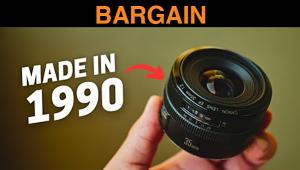Nikon Nikkor AF-S 120-300mm f/2.8E FL ED SR VR Telephoto Zoom Lens Review

After shooting with Nikon’s extraordinary AF-S Nikkor 180-400mm f/4E TC1.4 FL ED VR lens last year I wondered what their next telephoto zoom lens would be. We didn’t have to wait long, because hiding in the wings was the fast and powerful Nikkor AF-S 120-300mm f/2.8E FL ED SR VR.
Before pinning medals on this new lens, there are a few things to consider. First, the hefty price tag of $9500 is a bit steep for most of us. And the lens is really heavy, weighing in at nearly eight pounds in part do to bomb-proof construction with 25 elements in 19 groups.
With a long end of “only” 300mm I can see the application of this lens for occasional portraits, with a greater emphasis on sports and commercial use where the activity is short ranged—inside a gym, track and field events, or where the object is large in mass like the work I do on American railroads. It’s a bit short for shooting wildlife in my opinion, after years of shooting everything from birds to elephants with a 500mm or 600mm lens.

Optical Design & Build Quality
With those few quibbles out of the way, let’s take a look at what’s great about this lens and it’s effectiveness in the field. First, the Nikkor AF-S 120-300mm f/2.8E is loaded with extras. It features internal focusing (IF) so it doesn’t get longer as you zoom. The sophisticated optical formula has one Extra-low Dispersion element (ED) for reducing chromatic aberrations, two fluorite elements (FL) for shaper results, and a fluorite-coated front element to resist fingerprints, dirt and common everyday smudges.
There’s also a Short-wavelength Refractive (SR) glass element to reduce spherochromatism and Nikon’s Nano, Arneo and Super Integrated anti-reflection coatings—all of which further contribute to minimizing chromatic aberrations.

To maintain exposure consistency from frame-to-frame, the Nikkor AF-S 120-300mm f/2.8E features an electromagnetic diaphragm. Being a “G” type lens, aperture settings are controlled with the camera. Vibration Reduction (VR) is part of just about every Nikkor lens, and Nikon claims four stops of compensation against camera shake with the new 120-300mm zoom. A focus range limiter enables you to tailor the distance the lens will travel—from two or six feet to infinity for a shorter throw from one end to the other depending on your subject.
The construction of the lens is first class perfect in every way. Nikon uses a magnesium alloy to help curb weight. The zoom ring operates within a quarter of a turn and is effortless from 120-300mm. Everything from the switches on the left flank of the lens to the other markings are clear and well defined.

Key Features
With its hefty price you have a right to expect plenty of features, and Nikon doesn’t disappoint. Assignable function buttons are standard, and there’s a Memory button that can take you from one distance to a predetermined distance at lightning speed. A heavy-duty tripod collar with internal ball bearings is a no brainier on this lens.

The lens requires huge 112mm filters, and that can get pretty expensive with high-quality polarizers, ND filters, and the like. The lens is dust and moisture-resistant (not waterproof) and uses a large hood with a diameter of almost 6 in. and a depth of 4.5 in.
Performance
While using the lens outside, the AF-S 120-300mm f/2.8E FL ED SR VR held its own when it came to focusing. Pointing the lens at anything showed it was spot on without hesitation and all within a nanosecond. Because of the virus, I was hampered on the subjects I could photograph, but a short trip to Concord, Massachusetts and the nearby wildlife refuge provided enough subjects to give the lens a good run for the money.

The only negative feature is that this lens is heavy as mentioned above. Carrying it around can be tiring, but holding it by the tripod collar provided some relief. With a heavy lens like this, I wanted to put it through its paces by just relying upon Vibration Reduction during my time outdoors.
I tried to use as many combinations as I could relative to changing f/stops, shutter speeds, and checking for lens abnormalities or aberrations, and when I got home, I was not disappointed. Spending money on a big-ticket item like this should bring out the best of everything and it did. Images were super sharp right out to the edges, with pleasing bokeh.
Conclusion
Because of its size and weight this is a tripod or monopod type of lens. To me, the Nikkor AF-S 120-300mm f/2.8E FL ED SR VR is an ideal sports lens because of its speed. But when it comes to wildlife, and unless you can get really close, an extender or a DX body should be included in the mix. In any event, if you afford it and have a specific need for a lens like this, I can say is it’s very flexible for the job and is very fast and sharp!
You can find more information on the Nikkor AF-S 120-300mm f/2.8E FL ED SR VR Telephoto Zoom and other Nikkor lenses on Nikon’s website.
















































